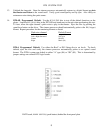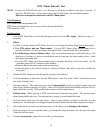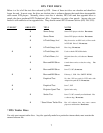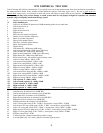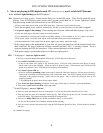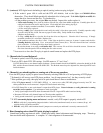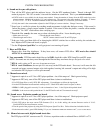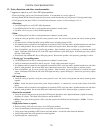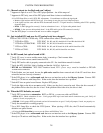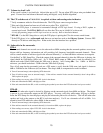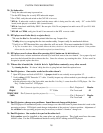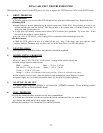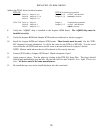13
SYSTEM TROUBLESHOOTING
12. Noise, distortion, and other sound anomalies.
* Apparent in optical as well? Not a DTS player problem.
• Turn off all amps, one by one to localize the problem. If an amp hums or is noisy, replace it.
• If using Kintek KT-90 subwoofer amps, these are prone to hum because they are self-powered. Check ground wiring.
• Verify player has the latest TCR (U14 on D422 board) firmware version, as of this writing it is V1.42.
• Distortion
• Use DTS Setup Disc to verify DTS SPL adjustments.
• Use DTS Empirical Test Disc to verify performance of theater’s sound system.
• Use RTA (real time analyzer) to verify channel/speaker EQ.
• Hum
• Use DTS Empirical Test Disc to verify performance of theater’s sound system.
• Verify the wiring of grounds, verify the correct ground is used. Do not tie circuit ground and chassis (earth) grounds
together.
• If system also has a Dolby DA10/20 or Sony SDDS, turn it off while playing in DTS.
• If a substitute cable was made for the installation (not made by DTS) verify the cable is shielded and that one end of the
shield is earth grounded. Do not route DTS audio cables next to power lines, florescent light, or projector motors.
• Turn off amplifiers, one by one to localize the problem. Once localized, use an oscilloscope to visualize the signal
output. Disconnect DTS from the CP, if the DTS output still hums, replace DTS player. If the hum goes away, replace
the amp. Check wiring.
• If subwoofer amp a Kintek KT-90, try lifting the ground. Because this speaker is self-powered, grounding is critical.
• “Frying egg” or crackling noises
• Use DTS Empirical Test Disc to verify performance of theater’s sound system.
• Verify all connections from DTS to the CP are good. Verify solder connections are good.
• If a substitute cable was made for the installation (not made by DTS) verify the cable is shielded and that one end of the
shield is earth grounded. Do not route DTS audio cables next to power lines, florescent light, or projector motors.
• Turn off amplifiers, one by one to localize the problem. Once localized, use an oscilloscope to visualize the signal
output. Disconnect DTS from the CP, if the DTS output still noisy, replace DTS player. If the noise goes away, replace
the amp.
• RF interference
• Verify the wiring of grounds, verify the correct ground is used. Do not tie circuit ground and chassis (earth) grounds
together.
• DTS-6: Verify the chassis ground wire (on the 50-pin connector) is connected to a screw on the chassis of the DTS
player.
• If a substitute cable was made for the installation (not made by DTS) verify the cable is shielded and that one end of the
shield is earth grounded. Do not route DTS audio cables next to power lines, florescent light, or projector motors.
• Buzz in the surrounds
• Verify the speed of the projector by using the DTS Projector Speed disc and a digital multimeter (capable of reading
frequency in 4 digits). The speed of the projector must be within 2%.
• DTS-6: If the speed of the projector is OK, verify the crystal on the D420 board (inside player) is 60MHz. If it isn’t,
replace it.
• High pitched tones or squeals
• Switch to analog, if the noise still occurs, not a DTS player problem.
• Verify all transformers inside the player are covered with a covered with a shield.
• Verify proper earth grounding of DTS chassis and cable shields. All outside cables should be shielded.
• Verify earth ground and circuit ground are not tied together.
• If problem persists, replace player.



